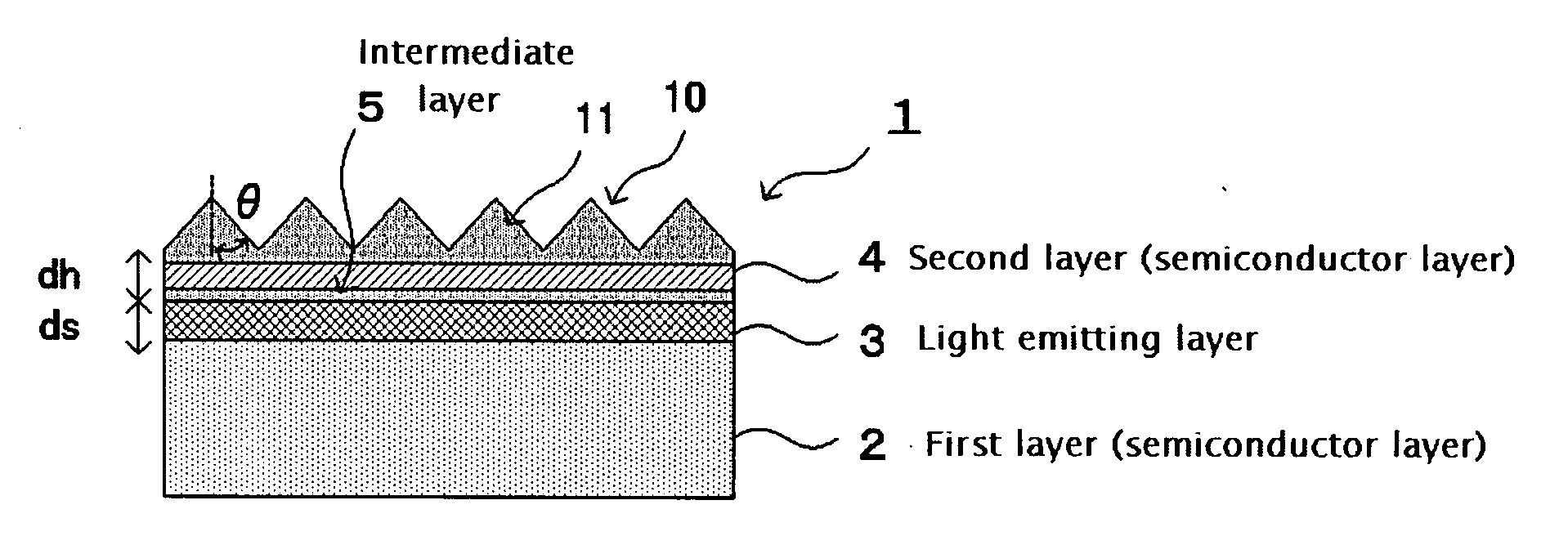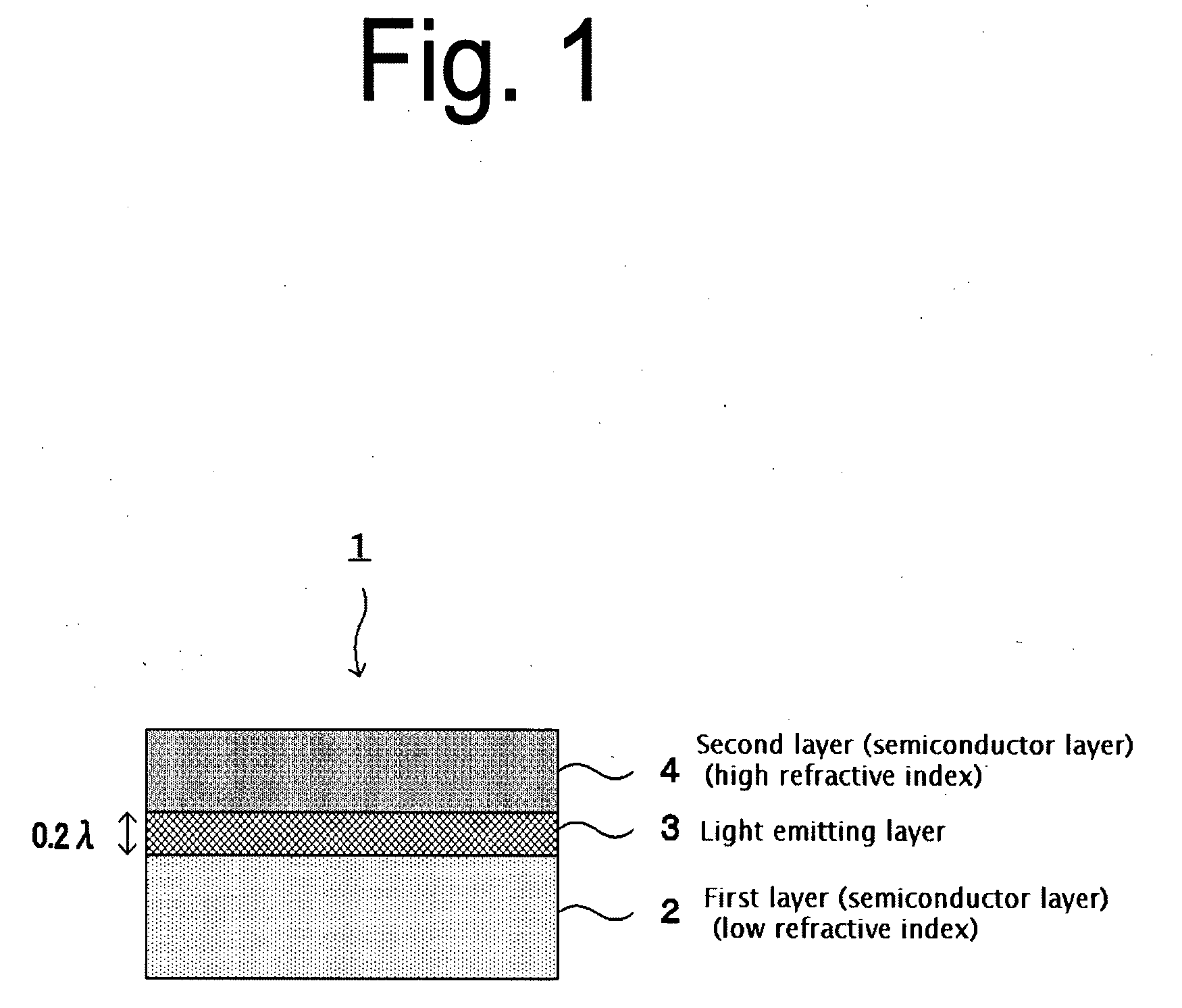Self-luminous device
- Summary
- Abstract
- Description
- Claims
- Application Information
AI Technical Summary
Benefits of technology
Problems solved by technology
Method used
Image
Examples
first embodiment
[0064]As in the first embodiment, the semiconductor layers 2, 4 and the light emitting layer 3 together form the self-luminous device 1. In one construction, each of the first semiconductor layer 2 and the second semiconductor layer 4 may be formed as a cladding layer made of AlGaN and the light emitting layer 3 may be made of InGaN.
[0065]The distribution of refractive indices of the first semiconductor layer 2, the light emitting layer 3 and the second semiconductor layer 4 may be either asymmetric as in the first embodiment, or symmetric. In the asymmetric construction, the light emitting layer 3, the first semiconductor layer 2 (cladding layer of AlGaN) and the second semiconductor layer 4 (cladding layer of AlGaN) may have refractive indices of, for example, 2.8, 2.5 and 2.78, respectively. In the symmetric construction, the light emitting layer 3 may have a refractive index of, for example, 2.8 while the first semiconductor layer 2 (cladding layer of AlGaN) and the second semic...
second embodiment
[0066]In the second embodiment, the two-dimensional periodic structure 10 may be a dense array of circular pores or a dense array of cone-shaped projections and may be formed of photonic crystals or photonic quasicrystals. Cone-shaped projections such as conical projections, pyramidal projections or projections of any desired shape may be densely arrayed to form the dense array of cone-shaped projections.
[0067]The photonic crystals are formed by arranging regions of different refractive indices in a repetitive pattern with a period substantially equal to the wavelength of light. The photonic quasicrystals are formed by arranging, in accordance with a repetitive quasicrystal pattern, patterns of photonic crystals that have two types of regions having two different refractive indices in which the two regions alternately repeat with a period substantially equal to the wavelength of light. The photonic quasicrystals have a quasiperiodic structure of refractive index that does not have t...
third embodiment
[0087]the present invention is now described with reference to FIG. 4.
[0088]Referring to FIG. 4, a self-luminous device 1 of the third embodiment is shown. As in the first embodiment, the self-luminous device of the third embodiment improves the light extraction efficiency by optimizing the distribution of refractive index in the semiconductor layers that form the self-luminous device. This embodiment is characterized by its multilayer structure including an intermediate layer.
[0089]The self-luminous device 1 has a multilayer structure comprising a first semiconductor layer 2, a light emitting layer 3 overlaying the first semiconductor layer 2, a second semiconductor layer 4 overlaying the light emitting layer 3, and an intermediate layer 5 within the second semiconductor layer 4.
[0090]A first form of the intermediate layer 5 has a refractive index close to that of the light emitting layer 3 and is formed of a medium that does not absorb the light emitted from the light emitting lay...
PUM
 Login to View More
Login to View More Abstract
Description
Claims
Application Information
 Login to View More
Login to View More - R&D
- Intellectual Property
- Life Sciences
- Materials
- Tech Scout
- Unparalleled Data Quality
- Higher Quality Content
- 60% Fewer Hallucinations
Browse by: Latest US Patents, China's latest patents, Technical Efficacy Thesaurus, Application Domain, Technology Topic, Popular Technical Reports.
© 2025 PatSnap. All rights reserved.Legal|Privacy policy|Modern Slavery Act Transparency Statement|Sitemap|About US| Contact US: help@patsnap.com



